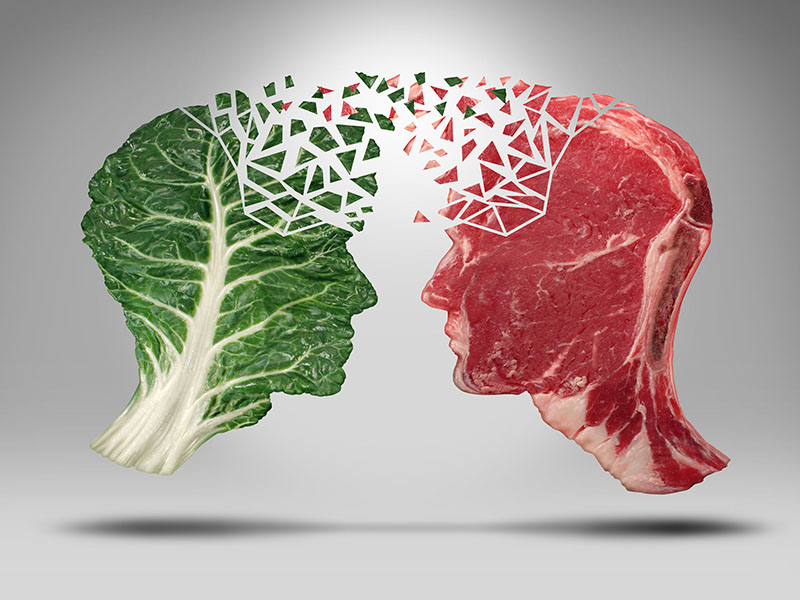
“What’s for dinner?” For responsible investors, there’s a lot to digest behind that question.
As the global population races toward 9.7 billion by 2050, demand for meat-based protein may reach unsustainable levels. According to data from the Organization for Economic Co-operation and Development (OECD) and the United Nations Food and Agriculture Organization (FAO), global meat consumption has increased by 30% during the past 20 years and is estimated to grow by an additional 13% in the next decade.
But this growth poses significant environmental, social and governance (ESG) challenges, many of them due to practices associated with large-scale industrial livestock production or factory farming. Research from the Farm Animal Investment Risk and Return Initiative (FAIRR) linked factory farming to at least 28 ESG issues that could pose significant risks to shareholder value, such as food safety scandals, environmental fines and overreliance on government subsidies.
The climate-related impact of animal farming is a major issue. An FAO analysis found that livestock production accounts for a staggering 7.1 gigatons of greenhouse gas (GHG) emissions annually, representing 14.5% of global emissions. A report from Chatham House, a U.K.-based think tank, concluded that keeping global warming below the “safe” 2°C threshold agreed upon by world leaders in 2015 will be impossible without a sharp reduction of emissions in the livestock industry. Thus, it is plausible that environmental regulations or carbon taxes could be introduced to mitigate emissions in this industry, leading to downside risks for agricultural companies with a high carbon footprint.
The industry’s overuse of antibiotics is another major concern for investors. Approximately 80% of all antibiotics produced in the U.S. are used on farm animals, which sets the stage for drug-resistant bacteria to emerge. Factory farms have been linked to some of the most significant outbreaks of disease ranging from avian flu and mad cow disease to E.coli, salmonella and other food-related illnesses in global food supply chains. The World Health Organization reported that microbial resistance to salmonella and other foodborne bacteria is clearly linked to antibiotic use in food animals.
Companies and their shareholders are already feeling the impact, as these risks have resulted in significant financial losses. For example, the 2015 outbreak of bird flu in the U.S. caused more than US$3.3 billion in economic losses, while the 2013 outbreak in Asia led to a 15% drop in share price for Thai poultry producer Charoen Pokphand Foods Public Co. Ltd. And following the 2009 outbreak of swine flu, share prices of two of the world’s largest pork producers — Smithfield Foods Inc. and Tyson Foods Inc. — suffered losses of 12.8% and 5.6%, respectively.
In addition to the risks associated with GHG emissions and increased use of antibiotics, livestock production is also a major source of water and air pollution, soil degradation and waste management issues. In fact, animal agriculture is also leading to deforestation and loss of biodiversity in many developing economies.
Many of these problems can be mitigated with the adoption of strong corporate governance practices as well-governed companies tend to be better at managing exposure to environmental and social risks. Due to the financial implications of these issues, financial advisors have a role to play in helping their clients understand what food and agriculture companies are doing to manage exposure to downside ESG risks. But there are also opportunities.
For example, a growing number of food companies are beginning to recognize that consumers and investors are concerned about what these companies are producing and how they’re producing it. This is explained in part by the growing wave of investors who incorporate ESG risk analysis into their investment decisions. But companies also recognize a market opportunity for plant-based foods, particularly for alternative protein sources as consumer tastes shift.
A 2018 FAIRR report cited data showing that annual global sales of plant-based meat alternatives have grown by 8% annually since 2010, and the compound annual growth rate between 2017 and 2021 is forecasted to be at about 9%. Sales are expected to continue to grow in North America and Europe, with significant growth projected in Asia.
To tap into this opportunity, large food companies have been making big bets on plant-based food products. These include Danone’s US$12.5-billion acquisition of plant-based food manufacturer WhiteWave Foods; Campbell’s Soup Co.’s US$700-million purchase of plant-based milk products manufacturer Pacific Foods of Oregon; and Pinnacle Foods Inc.’s US$158-million purchase of meat-free food manufacturer Garden Protein International Inc. Furthermore, global meat giant Tyson Foods recently announced that it will be launching Green Street — an entire brand dedicated to plant-based nutrition.
So, just as oil and gas companies are diversifying into clean energy, leading meat producers are diversifying into clean protein to align their business models with a sustainable future.
As the world’s population continues to grow, the demand for food and the need for food security will only escalate. But with each passing disease outbreak within the food supply chain, investors must recognize the need for food producers to operate more sustainably, safely and efficiently to protect and enhance shareholder value.
Advising your clients through this meaty issue is one meaningful way to provide long-term value and ensure you are an essential ingredient to their financial success.
